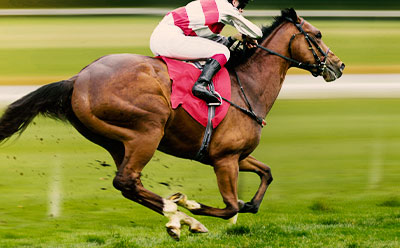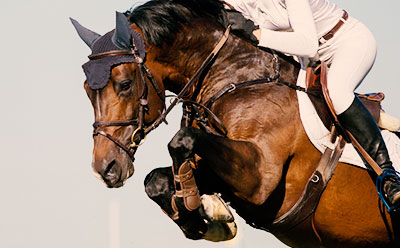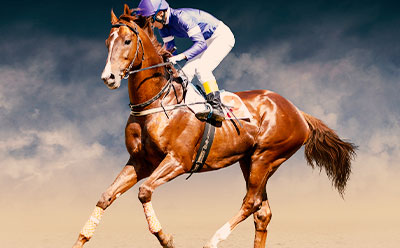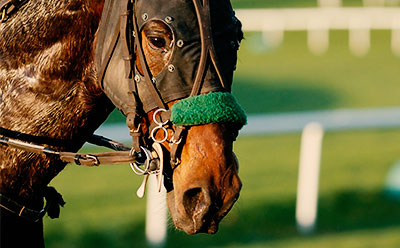Horse Jumping in Lummen – Fun Facts & Trivia | Most Popular Events
Horse jumping events are among the most adored sports in Lummen. That is because, in the Belgian municipality, nothing beats the excitement of seeing horses race on a race circuit in a bid to clinch the grand prize. Everyone in attendance is usually eager to find out which thoroughbred will cross the finish line first. Unlike other sports, show jumping or stadium jumping has led to the emergence of some significant personalities in Lummen; it has also led to the rise of the best horse racing events in the region. But before looking at some of the top horse show jumping competitions, this piece will look at everything regarding horse racing. But first, here is how horse show jumping came to be.
While Lummen celebrates its thrilling horse show jumping events, Canada boasts its own excitement with top online blackjack casinos. Whether you prefer strategic card games or equestrian sports, both offer adrenaline-pumping action.
The Origin of Showjumping

Showjumping is not a recent sport; the activity began as early as the 1700s. By then, there were no formal rules or special equipment to aid in the sport. After years of practice, showjumping finally got the first recognition in 1788 after it was mentioned in the manual of the French Calvary. Still, there was nothing significant about the sport then. In fact, unlike other events, the growth of show jumping was gradual to the extent that it took almost 100 years for the first show jumping event to occur.
After aeons of perfection, showjumping gained admiration in different countries, with shows taking place in huge arenas such as Agricultural Hall and Madison Square Garden. Later on, the first show jumping event got recorded, and unlike the competitions, the original events were based on high leap and wide leap. To clarify, the judges would determine the jockey that jumped highest and widest.
After long years of perfecting the sport, showjumping finally became an official competition with millions of fans worldwide. That led to its inclusion in the Olympics in 1900. The idea exposed more people to horse racing. But then, the first teams were mostly military, and later, civilians joined. In no time, horse racing was open to every individual who was ready to perfect the skill.
Evolution of Horse Showjumping

Even after show jumping in the Olympics, the event was yet to undergo the appropriate evolution. The rules were less stringent, and more often, jockeys would take an unconducive position when riding. That led to the introduction of the forward seat by Federico Caprilli, the father of modern riding.
The forward seat was designed to position the jockey at an appropriate angle while riding the horse. In fact, the forward seat’s design can accommodate any horse, especially while moving at a great speed. It is by far one of the biggest inventions of horse show jumping, and it marked a new era of the event. Some people call it the ‘two-point.’ Most riders find the forward seat balanced, making it possible for the jockey to communicate with the horse and achieve impeccable results. Since its invention, the forward seat has been praised by renowned riders like Tad Coffin, who even went ahead to describe everything about the forward seat from its advantages to why it is the key tool for horse show jumping.
Another amazing evolution of horse show jumping is the inclusion of women in the sport. At first, horse show jumping was considered for hunting. In fact, that was the only time horses would jump fences. After that, it became a military sport with only men participating in the event. The first time horse show jumping took place in the Olympics, only men were allowed to participate. In 1952, everything changed when women were first allowed to participate in the Olympic equestrian events. That saw Helena du Pont, an American woman, becoming the first woman to participate in a competition in the Tokyo games in 1964.
Currently, horse show jumping is not just a man’s competition but a mixed-gender contest that tests the perfection of the jockeys and the endurance of their horses. At the moment, it is one of the most widely spectated events in Lumen, Belgium, with multiple competitions taking place daily and weekly in different capacities. The evolution also led to the establishment of The International Federation for Equestrian Sports, which is a renowned body governing Equestrian sports, headquartered in Lausanne, Switzerland. The main mission of the body is to monitor the equestrian sports code of conduct and protect the well-being of horses.
Interesting Facts About Horse Showjumping
Even though horse show jumping is yet to become widely recognized like other sports, it has proven to be a fun event. In regions like Lummen, the sport is worshipped with spectators from all over Belgium cheering their favourite pair. So far, some of the fun facts that make horse show jumping exciting include:
- Men still dominate the sport.
According to statistics, males have always dominated the sport despite women being allowed to participate in horse show jumping. For more than 40 years, less than ten women have competed in the Triple Crown race. The last woman to compete in the tournament was Rosie Napravnik. Unfortunately, Napravnik retired at 26 while pregnant. Since her departure, very few women have been able to reach the top level.
- Some jumpers believe in superstition.
Everyone believes horse show jumping requires skill and perfection. That is because jockeys have to connect with the horse for them to showcase the best performance. However, there are jumpers like Mclain Ward, who are superstitious. For instance, Ward wears a new tie pin daily. Also, he always wears his left boot first. Another superstitious jumper is Eric Lamaze, who wears his spurs, boots, and clothes following a specific routine. Both jockeys are prolific, with Mclain Ward ranking third in LONGINES ranking.
- Germany is respected for horse jumping
Since the sport gained international recognition, Germany has proven to be the best country in horse show jumping. The country holds more titles both by individual jumpers and teams. Also, the list of top-ranking equestrian athletes is dominated by Germans.
- No woman has ever won an individual showjumping gold medal
Even though show jumping has seen the emergence of elite women jockeys like Valentina Truppa and Jill Henselwood, no woman has ever won an individual gold medal. However, a couple of women have managed to win team gold medals. This is yet another indication that horse show jumping is a male-dominated sport.
- Only English forms of horse riding are accepted at the Olympics level
Equestrian horse riding is only available in two types, Western and English. However, when it comes to the Olympics, only the English forms of equestrian riding are accepted. Not a single western form is allowed in the competitions.
Rules of Horse Showjumping

Like any other sport, horse show jumping has special rules that jockeys must follow. Failure to adhere to any stipulation leads to penalties like point deduction, which can significantly affect the jockey’s position during a competition. The winner of any horse jumping event is the rider and horse who complete a course within the shortest period while making minimum faults. That leads to the main rules of horse show jumping.
First, the course plan showing a detailed description of the event has to be displayed at the arena’s entrance at least 30 minutes before the horse show jumping event begins. Usually, the course plan describes the design of the course, including numbered obstacles. Every course obstacle on the course plan should be numbered in the order in which the dual must jump. A red flag gets used to indicate any compulsory turning point.
Riders and their horses must work in unison to complete every course without knocking down bars. Thus, the rider must study the course plan beforehand to know the best angle to take and the strategies to implement to achieve a faultless race across the course. As stated above, the performance of the rider and horse is determined by speed and precision. Some of the actions denoted as faults include knocking down fences, horse disobedience, exceeding the stipulated time to complete a course. If any of those mistakes occur, four points are knocked off the jockey’s cumulative score.
Obstacles must have varying shapes and sizes. Moreover, course analysis and tests must get done for the strategic placement of obstacles. For example, each obstacle should be knocked down and not fall at the slightest touch. That is why the obstacle placement angle and other factors are determined before erecting any obstacles or fences.
The arena must have a large display board clearly showing the rider’s statistics. That includes a countdown of every round. The time indicated is determined by the length of the course and the course’s design. Riders must have no problem viewing the display board. They are allowed to inspect the course before racing for that particular reason. Any faults or flaws should be reported for correction.
Riders must put on protective gear before racing. That includes headgear which is properly fastened using three-point retention. Moreover, the rider can test the comfort of the gear while schooling. If a gear becomes loose during the competition, the rider will get required to fasten it back in place before jumping the next obstacle to avoid elimination. The same applies if the rider’s headgear falls off. Note that the countdown continues even if the rider stops to pick the headgear. That is why counter checking to ensure everything is in place is vital, especially while schooling the horse.
Best Horses for The Show
Not every horse is equipped to tackle horse show jumping with the precision and endurance required. That is why jockeys and horse trainers only go for specific horse breeds. However, while searching for the right showjumper, most jockeys consider these important factors:
- Skill
- Experience
- Form
- Confirmation
However, even with these factors, certain horse breeds dominate show jumping events due to their character and ability to take instructions on demand. In that case, the best show jumpers include:
- Hanoverian Warmblood
- Holsteiner
- Selle Français
- Belgian Warmblood
Hanoverian Warmblood Steed
A Hanoverian warmblood is a popular showjumper of German origin. The horse has an impressive height of about 1.65 meters with a perfect build. Besides, the Hanoverian has a beautiful appearance, not to mention a perfect character for showjumping. With a good trainer and strict training, the Hanoverian warmblood always ends up displaying the best performance.
Holsteiner
The Holsteiner is yet another horse from Germany that features a small head and a very strong back. It is slightly taller than the Hanoverian with a slightly curved neck. What makes the Holsteiner a suitable showjumper is its obedience and amazing structure. That makes it easier to control and give instruction. That is why most jockeys prefer the breed.
Selle Français
Selle Français is one of the most appreciated showjumpers for its unique build and strong genetics courtesy of the English thoroughbred. The horse is also powerful with unmatched intelligence. A combination of genetics and body formation makes it the best companion for tough courses. Its bone structure and flexibility will see it clear obstacles with ease. The horse only needs a strict trainer and an experienced jockey to achieve the best performance. Selle Français stands about 1.7m above the ground with a unique appearance.
Belgian Warmblood
The Belgian warmblood is a broad-chested horse that exhibits strong thoroughbred genetics. Its masculine neck stands out, and its ability to pick up skills fast makes it one of the best showjumpers. Like the Selle Français, Belgian warmblood stands about 1.7m above the ground with a long and strong back. The horse also has strong joints with a friendly temperament which makes it teachable and easy to handle. For years, Belgian warmblood has managed to prove its ability to jump obstacles with no faults. It is also fast and superior on the course.
Events in Lummen
After years of planning, organizers have finally come up with dates for the horse show jumping events in Lummen. Every horse show jumping fan is looking forward to experiencing the race of the year. Some of the areas that will be hosting the events include The Garden Arena and The Derby Arena. So far, the arenas have been prepared to pristine conditions awaiting the Lummen competitions. Spectators should expect races for seven-year-old horses, which will be used to reveal the future stars.
However, most events have been rescheduled by the CSI Lummen organization to a later date due to various disruptions. For example, nearly all jumping competitions that were to happen in Spring have been postponed to Autumn. The dates are expected to be communicated soon, with horse show jumping fans expecting thrilling performances.
Why is Showjumping not so Popular?
Even with multiple shows jumping events in Lummen and millions of fans following the sport across the globe, show jumping is yet to reach its prime. In fact, show jumping has seriously failed to gather audience and attention. That has led to low incomes among jockeys. So why is the sport less popular despite starting in the 19th century.
The Sport is Undergoing a Slow Transition
The world of showjumping is undergoing a slow transition compared to other sports, making it less likeable. For instance, the judging rules being used to rank horses and jockeys today got invented decades ago. Yet, no one has tried to make any amendments to make the sport more accommodative.
Most Horses are Given Performance-Enhancing Drugs
The whole world understands that most horses are given performance-enhancing drugs to make them compete appealingly. These are actions that happen in broad daylight, and no one seems to be doing anything to tone down the application of these drugs. That has affected the audience of show jumpers significantly.
Horses do All The Work
Most people unfamiliar with horse show jumping often understand horses do all the work. After all, the work of the jockey is to control the actions of the horse. So, to prove horses, do all the heavy lifting; if a horse refuses to jump an obstacle or decides to duck it, the jockey has no chance of stopping the horse.
Horse show jumping is a unique sport often underrated by the public but exciting to watch. It is one of the most enjoyed sports in Lummen and other municipalities in Belgium. That is why every year, people across the globe gather in the municipality to watch top jockeys compete against each other as new stars are revealed. For years, the horse show jumping events have taken place in Spring. However, this time there have been changes with fans waiting for the official dates to be communicated.
